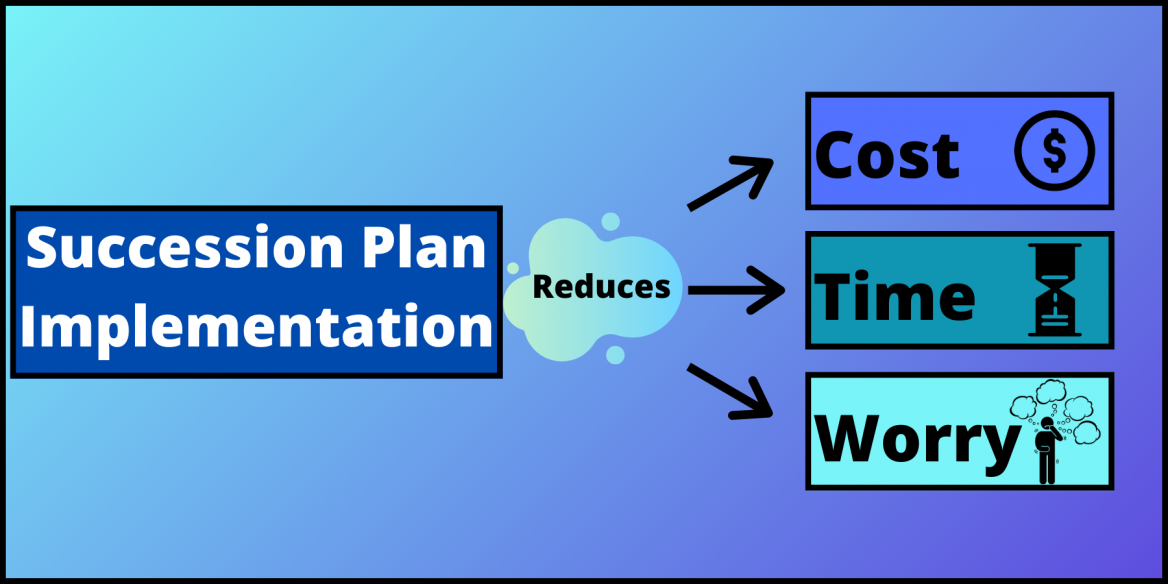Why Next-Gen Leadership Training is a Vital Piece of Succession Planning (Free Self-Assessment)
Have you thought about whether the next generation of leaders are ready to fill key leadership roles in your organization? If the answer is no, or you’re unsure, you may be in danger of having an empty C-suite or underqualified people moving into leadership positions in the future.
The best way to combat this situation is to develop a succession planning program that identifies and nurtures the next generation of leaders through mentoring, training and development, so they will be ready to take the helm when the time comes. For a comprehensive look at the overall topic of succession planning, go here.
In this article, you’ll read about some common crisis scenarios, but more importantly you’ll have the opportunity to take our succession planning self-assessment and ultimately learn how to ensure your company’s future viability through the creation of a leadership development succession program.
Don't Be Unprepared
As I mentioned before, when companies are unprepared and faced with surprise scenarios like the ones below, it can result in on-the-fly – or crisis – succession planning, which you definitely want to take steps to avoid.
- An accident results in the unexpected exit of a C-suite company executive
- Your CEO decides to retire in the near future
- A senior level employee in a key position leaves to work for a competitor
- There are critical roles in your company that if suddenly left vacant would create a huge gap, likely resulting in potential lost productivity, mistakes or missed opportunities
- HR is unable to assess candidates effectively or doesn’t have a clear idea of what is needed from leadership positions
“It’s not uncommon for many company leaders to get too comfortable and think ‘this won’t happen to us,’ our infrastructure is safe, but the truth is that unexpected situations happen all the time. The good news is that, new leaders can be coached and these gaps and losses can be anticipated and planned for,” explained Jim Bitterle, Managing Partner, EDSI Consulting.
While these situations are common and demonstrate the real, potential risks of not having a succession plan, there are proactive steps you can take that will improve the organizational structure and strategic direction of the company, such as leadership development. For more on creating a proactive versus reactive leadership development roadmap, read this blog.
A key component in any solid succession planning program includes leadership development: the process of grooming qualified candidates to assume senior leadership positions as they become available. Shockingly, only 15 percent of companies in North America claim to have a pipeline of such candidates in place.
While unexpected succession situations can happen to companies across all industries, the goal is to minimize the unforeseen nature of these succession obstacles and also work to reduce the time, cost and worry of filling key roles when they become vacant.
Companies that do practice successful succession planning typically view it as a development process versus a replacement process. When critical openings occur, these companies are ready to fill the positions with skilled, experienced internal candidates because they have planned for transition – by ensuring that the individuals selected have been exposed to relevant training and career development opportunities. And they are also ready to move selected employees strategically – kind of like pieces in a game of chess – to fill the positions that become available. Over time, the loss of one key employee results in improved career opportunities for other team members in the pipeline who have been properly prepared and trained.
Think in Threes
In order to ensure the long-term success of your business, it’s crucial to focus on these three leadership-focused categories of thinking:
Assess
- Identify significant business challenges in the next 1-5 years
- Select key competencies and abilities that are critical success factors
Evaluate
- Identify potential leaders
- Evaluate current skills and potential abilities
Develop
- Create a time-phased leadership development plan
Don’t wait any longer to take your first step toward creating a leadership-focused succession plan. Our 12-question Succession Starting Point Self-Assessment is a great place to start brainstorming and thinking strategically.
Your State of Succession: A Starting Point Self-Assessment
This assessment measures your preparation for future opportunities and challenges your organization will face and helps you understand your current organizational and potential successor situation in order to prepare for the future.
Please answer the following questions with a yes or no answer, based on your current state. Each yes answer gets you one point.
- Do you have a documented organization chart?
- Do you have updated, documented job descriptions for all positions?
- Have you identified all roles that need successors?
- Have you identified 1-2 potential successors for each critical role?
- Have you created success profiles for the jobs to be filled by successors?
- Have you assessed potential successors for their ability to succeed in their future role?
- Have you created development plans for the successors?
- Have you determined approximate dates for each key succession?
- Does the owner support the succession planning effort?
- Do you have a vision for the transfer of ownership and management of the company?
- Is there a detailed contingency plan in case the business owner dies or becomes unable to continue working sooner than anticipated?
- Have you recently had the business valued and analyzed in the same way potential buyers and competitors would?
Now, add up your points and check below for a preliminary calculation of your current leadership development succession state.
Score scale: 0-3 = Very high risk
4-6 = High risk
7-9 = Moderate risk
10-12 = Lowest risk
A 0-3 score means you are at very high risk of not having the right successor developed and ready to move into a key role if an unexpected or urgent situation arises, and overall company awareness, vision and preparedness is lacking.
A 4-6 score indicates you are at high risk when it comes to having a long-term talent and strategy blueprint on succession development. You may have given some thought to the process or taken a few baby steps, but you need help to create an action plan.
A 7-9 score says that you fall into the moderate risk category. It’s possible you have done some preliminary planning related to leadership succession. This signals you may need assistance with the implementation portion of the process.
A 10-12 score is very good. This means that it’s likely you have a future-oriented plan in place and are actively working to find and develop a new generation of leaders through objective, disciplined methods. There still could be potential gaps in your process that an expert could help uncover.
Even if you fall into the moderate or low risk categories, don’t get too complacent. You’ll still want to practice objective decision-making and commit to a reasonable level of organizational discipline to implement a proactive approach that includes regularly measuring and evaluating the process, with clear communication and open-mindedness.
For a free consultation that includes a full interpretation of your self-assessment results, our succession planning consultants are available to meet with you at your convenience, either remotely or in person.



